Tick-tock. Timing it Right For Fertility
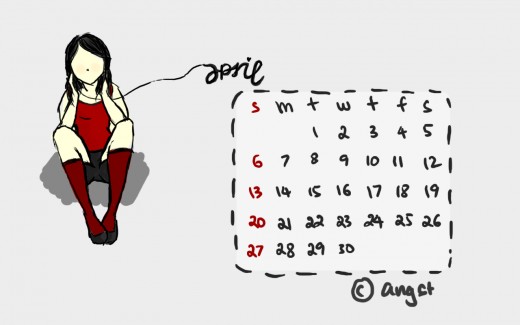
Many factors can influence our inability to conceive, but one of the biggest is timing. It can even be the single most important thing that is stopping you from conceiving. The timing, and frequency of sex, is one way we can control our own fertility.
Now I know it isn’t the sexiest or most romantic of ways to fall pregnant. We would all love to fall pregnant while having that romantic, starlit romp on the beach; but the reality is, we don’t. Well, very few of us at any rate.
For many of us – especially those of us past the fertile child-bearing years – timing our rolls in the hay around ovulation is essential.
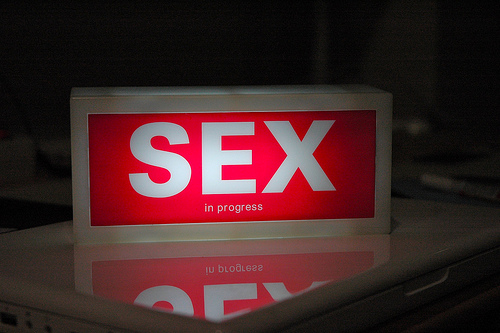
The window of opportunity
Around ovulation, you are at your most fertile, and therefore most likely to fall pregnant.
Sperm can last for up to five days in cervical fluid, and your own ovum lasts one day. This means you have six days when you are theoretically at your most fertile.
These six days would include the five days before you ovulate, and the day of ovulation. Having sex on any of these days could technically result in fertilization and pregnancy.
The most fertile of those days, would be the three leading up to and including the day of ovulation.
In a scientific survey done recently, a whopping 94% of women who had sex on at least one of those those three days, fell pregnant.
This is not to say you should not have sex outside of those most fertile of days; not at all. The more sex the better, for couples who have no male fertility issues.
While frequency of sex does influence the supply of sperm, you are still more likely to fall pregnant during your fertile days by having more sex.
In other words, if your partner has a normal sperm count, and healthy sperm, there is no need to worry about ‘using’ up his sperm. So have more sex, especially during the fertile window, is what I’m saying.
However, if there are signs of male infertility, such as sluggish sperm, or low sperm count, it is advisable to ease off on the sex a bit. Consult your doctor about the best course of action during the fertile window period, to increase sperm supply.
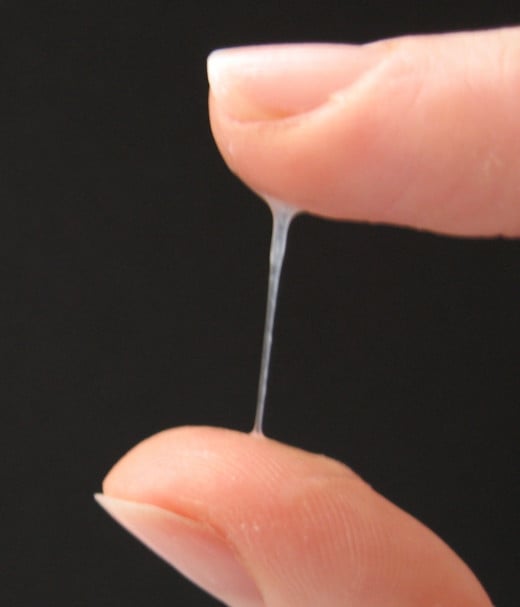
Ovulation Prediction Kits are available on Amazon,com
Taking Notes
Being aware of your own ovulation and fertile period can radically improve your chances of falling pregnant, and of course reduce the time it takes to conceive.
Theoretically, we ovulate on day 14 of our menstrual cycle, but in reality, all women ovulate differently.
This is where keeping a diary or charting your symptoms comes in. Make a note of which day you ovulated in your cycle, so that the following months you can check back and see whether it was on the same day each month. This is called the Sympto-Thermal method.
Make notes on cervical fluid discharge. It will look like egg whites in the most fertile days leading up to ovulation. It is most common to have this egg white cervical mucus (EWCM) for two or three days, but it can also be for up to five days before ovulation, or as little as one day before.
Cervical mucus provides the most ideal environment for sperm to thrive, so this is a very clear indicator of when you should be having sex.
Cervical fluid will change throughout the menstrual cycle. It goes from being dry (when there is none), to sticky, to creamy, and then watery, when it will start to resemble egg whites.
(Note that some women also produce EWCM just before they menstruate. But this would obviously NOT be the best time to conceive. Also note that certain drugs, such as decongestants, can alter the texture of cervical fluid in some women.)
Buy yourself an ovulation prediction kit (OPK). They can be enormously beneficial in detecting what is happening in the body. Just before we ovulate, there is a surge in the luteinizing hormone, which will show up on an OPK.
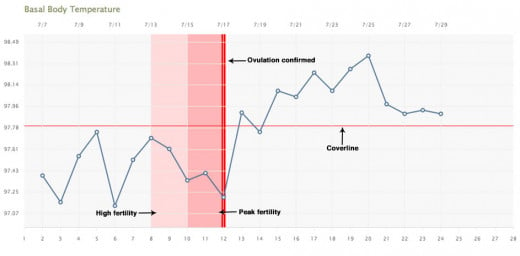
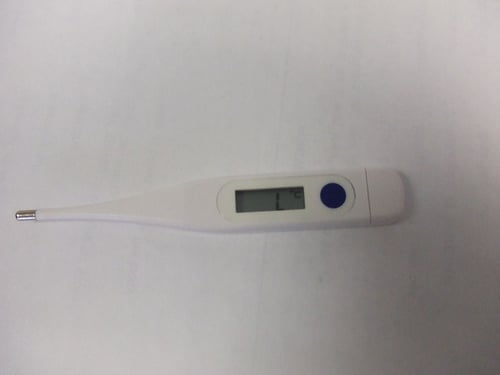
Going Hot and Cold
There will also be signs you have already ovulated, which will help you to know on which day it happened.
Charting your thermal shift is one way of doing that. By testing your body’s temperature, you are getting a bigger picture of what your hormones are doing, and when.
Buy yourself a digital thermometer – preferably a Basal Body Thermometer, although it isn’t absolutely necessary; you can use a regular fever thermometer. Digital is easier to use than a mercury one.
What is most important is that you measure the pattern of your temperature – the highs and lows – and not so much the actual temperature.
Every day, the minute you wake up, take your temperature. Literally, don’t do anything else – don’t talk, don’t have sex, don’t set your alarm to snooze, don’t go and pee. Before you even move, take your temperature and write it down. This is your Basal Body Temperature.
Now chart your temperature by drawing a simple chart (see above) with your temperature up the side and the days of your cycle along the bottom, starting with day one of your menstruation.
You will notice how your temperature forms a pattern, month after month.
From day one, until ovulation, your temperature will remain relatively low. It varies from person to person, but it won’t vary that much on your scale, until ovulation.
On the day of ovulation, your temperature will be higher, and will stay higher, until your next period. On average, a woman’s temperature will rise between 0.3 and 0.9°C (0.5 and 1.6°F) on ovulation.
When to start your chart?
Women who have used this method before have indicated that it is best to plan on using the Sympto-Thermal method for at least 8 months, to get a very clear picture of your hormonal changes, and when you are ovulating. Your cycles will sometimes be shorter and longer, so you will need the time to pinpoint your fertile days.
(Note that if you want to avoid falling pregnant, this method is also a very good indicator of when you will be least likely to conceive, without having to use contraception.)
Getting it together
The last day when your cervical fluid is at its most watery, or at egg white consistency, and when your temperature is still low, is the day you will ovulate – within the next 24 hours.
You will be able to confirm that you ovulated the next day if your temperature goes up, and if it stays up for three days in a row.
(Note that if your temperature doesn’t stay up for three days, you may well still be fertile, so keep having sex – just in case! )
Keep charting your temperature and cervical fluid for a few months, until you see a clear pattern developing. You will be able to tell when you ovulated every month, and be able to pinpoint your most fertile days.
It wouldn’t go amiss to chart the days you have sex as well.

Feeling frisky?
In my research on ovulation and timing, I noticed a very important point that is mostly omitted: women tend to feel a lot more amorous during their most fertile period.
I, for one, definitely have an increased sex drive just before ovulation.
It’s only natural that women will feel this way, as our bodies are telling us ‘it’s baby-making time, honey!’
Not only do we feel friskier, but we look different as well. Our skin becomes more ‘plumped up’, our lips slightly fuller, and we apparently smell different too. All of this is so that we can attract the opposite sex during our most fertile days.
We also tend to look at different kinds of men. During our most fertile days, we will more than likely look at more masculine, rugged men, who are taller and have deeper voices. This is especially true of women who do not have a particularly masculine partner. Not to say we will run off with the more masculine guy; we’ll just ‘appreciate’ his masculinity more!
In 2007 a study for Evolution and Human Behavior showed that strippers who were ovulating earned an average of $30 more per hour than women who were menstruating, and $15 more than women who were neither ovulating nor menstruating.
Easy does it
This all sounds relatively simple; and it is. But it can become stressful too, for both you and your partner. I remember almost forcing my husband to come home and have sex straight away, when I knew I was about to ovulate, and he was just too stressed out with work, and tired.
I, of course, was furious that he wouldn’t oblige, and sulked for the remainder of my fertile days – which made it even worse.
It just doesn’t always pan out how you expect it to. Try to not allow this to become ‘clinical’ and a ‘task’.
I would suggest you try to make it fun – up the romance a bit. Warn your partner that your fertile days are coming up, so he needs to adjust his work schedule – as should you. You both need to be as relaxed as possible over this period. I would be lying if I said it was easy!
Ideally, try and get away for a couple of days over your most fertile days, and really take time out to relax.
Good luck and happy planning!
For more information on fertility health and trying to conceive naturally, please see my other articles.
- Homeopathic remedies for fertility
Can homeopathic remedies be used for fertility purposes? Many people swear by these all-natural remedies, but does it actually work? - The best diet for fertility health
Many factors can contribute to infertility; an unhealthy lifestyle is just one of them. So why not increase your chances of falling pregnant by living the healthiest life you can? - Using Chinese Herbs for Fertility
Chinese medicine is gaining world-wide popularity because of its effectiveness in fertility-related issues. - Reflexology and fertility
Many women claim that reflexology helped them conceive, despite fertility issues or age-related problems. Here's how it can work for you. - Progesterone and fertility
Using bio-identical progesterone can help with your fertility issues, before and during pregnancy. - Change your exercise routine for optimal fertility h...
Whether you’re trying to conceive or not, exercise is good for you. Not just to keep your body in shape, but your mind too. - Vitamins and Supplements for Fertility
Many vitamins and supplements have astounding benefits specifically related to fertility, for men and women. - The Benefits of Acupuncture for Fertility Issues
Can acupuncture help with your fertility issues? In some countries, acupuncture has been used for centuries as a means to help women fall pregnant. - The 6 Best Yoga Poses for Fertility
Many fertility issues can be caused by stress. These yoga poses can relieve stress and be incredibly beneficial to your reproductive organs. - DHEA for age-related fertility issues
For many years, DHEA has been heralded as an anti-aging supplement, but it is now also being used by many older women as a supplement to boost fertility. Here's why:









